Today Current Affairs: 31st May 2022 for UPSC IAS exams, State PSC exams, SSC CGL, State SSC, RRB, Railways, Banking Exam & IBPS, etc
Table of Contents
China Building a Second Bridge On The Pangong Tso Lake:
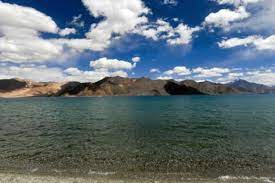
The Ministry of External Affairs has confirmed that China is building a second bridge on the Pangong Tso lake.
- The site of the bridge is around 20 km east of Finger 8 on the lake’s north bank – where the Line of Actual Control (LAC) passes.
- However, the actual distance by road is more than 35 km between the bridge site and Finger 8.
- The construction site is just east of Khurnak Fort, where China has major frontier defence bases.
- China calls it Rutong Country.
- It has a frontier defence company at the Khurnak Fort, and further east, a water squadron deployed at Banmozhang.
- Although it is being built in territory that is under China’s control since 1958, the exact point is just west of India’s claim line.
- The Ministry of External Affairs considers the area as illegally occupied by China.
- The bridges are at one of the narrowest points on the lake, close to the LAC.
- These constructions will connect both sides of the lake, which would significantly cut down time for the People’s Liberation Army (PLA) to move troops and armored vehicles.
- The induction of troops from the G219 highway (Chinese national highway) would come down by 130 km due to this bridge.
Pangong Tso
- Pangong Tso is a 135-km long landlocked lake located at an altitude of over 14,000 feet i.e., 4350 m above sea level.
- Indian and China have around one-third and two-thirds of Pangong Tso Lake respectively.
- India has around 45 km of Pangong Tso under its control while approximately 60% of the lake, in terms of length, lies in China,
- The eastern end of Pangong Tso lies in Tibet.
- The lake, a glacial melt, has mountain spurs of the Chang Chenmo range jetting down, referred to as fingers.
- It is one of the highest altitude lakes in the world that is filled with saline water.
- However, even though it is a saline water lake, Pangong Tso freezes completely.
- The brackish water of this region has very low micro-vegetation.
- No aquatic life or fish, except crustaceans during winters are found.
- It is a kind of endorheic basin, which implies that it retains its water and does not allow outflow of its water to other external water bodies, such as oceans and rivers.
- Pangong Tso is popular for its changing colour ability.
- Its colour changes from shades of blue to green to red.
Connectivity Projects In Northeast India:
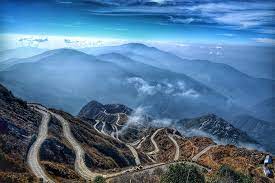
Union Finance Minister Nirmala Sitharaman said the Centre is implementing various rail, road and air connectivity projects worth ₹1,34,200 crore in Northeast India.
- Addressing the “Natural Allies in Development and Interdependence (NADI)” conclave here, she said the Union government had been pumping in huge money to develop a number of infrastructure projects throughout the region.
- The Centre is carrying out 20 railway projects worth ₹74,000 crore for 2,011 km, which are spread across the northeast.
- The Centre is also developing 4,000 km of roads in the region at a total cost of ₹58,000 crore.
- There are 15 ongoing air connectivity projects in the northeast, costing around ₹2,200 crore.
- India and Bangladesh had 50 riverine systems which could be leveraged for all types of transportation as the cost of travel through water was the least when compared to air, road and rail networks.
- The government is further developing the National Waterways (NW)-1 on the Ganga, NW-2 on the Brahmaputra and NW-16 on the Barak.
- The entire area between Sadiya and Dhubri in Assam along the Brahmaputra was being developed for better connectivity.
- The Eastern Waterways Connectivity Transport Grid, once completed, will offer seamless connectivity not only between the northeast and the rest of India but also on the subcontinent.
West Nile Virus:
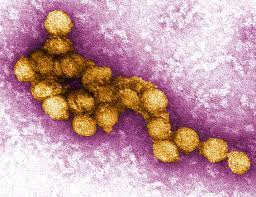
The Kerala health department is on alert after the death of a 47-year-old from Thrissur due to the West Nile Virus. The virus was first reported in the state in Alappuzha in 2006 and then in Ernakulam in 2011.
- The West Nile Virus is a mosquito-borne, single-stranded RNA virus.
- It is “a member of the flavivirus genus and belongs to the Japanese Encephalitis antigenic complex of the family Flaviviridae”.
- Culex species of mosquitoes act as the principal vectors for transmission.
- It is transmitted by infected mosquitoes between and among humans and animals, including birds, which are the reservoir host of the virus.
- WNV can also spread through blood transfusion, from an infected mother to her child, or through exposure to the virus in laboratories.
- It is not known to spread by contact with infected humans or animals. To date, no human-to-human transmission of WNV through casual contact has been documented.
- The disease is asymptomatic in 80% of the infected people. In rest of the 20% cases, the symptoms include fever, headache, fatigue, body aches, nausea, rash, and swollen glands.
- This vector-borne disease can be prevented by protecting one-self from mosquito bites.
- Other steps are wearing clothing that acts as a barrier to exposure to bites, reducing breeding sites, covering water storage containers and eliminating puddles and drainage of places where water accumulates.
The International Day Of UN Peacekeepers:

The International Day of UN Peacekeepers was observed on May 29, 2022. This year, the theme is People Peace Progress: The Power of Partnerships.
- For the past two decades on this day, UN Peacekeepers, also known as the Blue Helmets, are remembered by the world for their role in promoting security, peace and stability.
- More than one million UN peacekeepers have taken part in 72 such operations since 1948.
- India has played a key role in UN Peacekeeping operations. It sent doctors and nurses to Congo in 1960 and then an all women team to Liberia in 2008.
US becomes India’s Biggest Trading Partner In FY22:
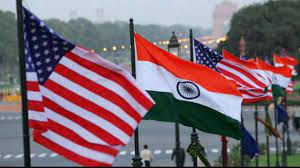
The US has surpassed China to become India’s top trading partner in 2021-22.
- In 2021-22, the bilateral trade between the US and India stood at $119.42 billion as against $80.51 billion in 2020-21.
- The US is one of the few countries with which India has a trade surplus.
- In 2021-22, the UAE with $72.9 billion, was the third largest trading partner of India. It was followed by Saudi Arabia ($42,85 billion), Iraq ($34.33 billion) and Singapore ($30 billion).
Palme d’Or : Winner 2022

The Palme d’Or is considered one of the most prestigious awards in the film industry.
- The winner – 2022: The Swedish satire Triangle of Sadness, directed by Ruben Östlund.
- It is awarded to the film adjudged the best among those contending at the Cannes Film Festival.
- Cannes is one of the “big five” international film festivals — the other four being the Venice Film Festival, the Berlin International Film Festival, the Toronto International Film Festival and the Sundance Film Festival.
- Chetan Anand’s Neecha Nagar is the only Indian film to win the award (The film was never released in India).
Benefits Under The PM Cares For Children Scheme:
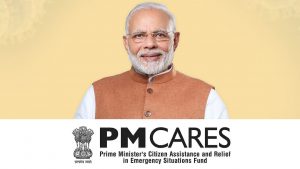
Prime Minister Narendra Modi has released benefits under the PM Cares for children scheme that supports those who lost their parents during Covid-19 pandemic.
- Launched in May 2021.
- The scheme has been launched for support & empowerment of Covid affected children.
- Eligibility: All children who have lost both parents or surviving parent or legal guardian/adoptive parents due to Covid 19 will be supported under the scheme.
- Features of the scheme:
- A corpus of Rs 10 lakh for each child: This corpus will be used to give a monthly stipend from 18 years of their age, for the next five years and on reaching the age of 23 years, he or she will get the corpus amount as one lump-sum for personal and professional use.
- School Education: For children under 10 years: Admission will be given in the nearest Kendriya Vidyalaya or in a private school as a day scholar.
- School Education: for children between 11-18 years: The child will be given admission in any Central Government residential school such as Sainik School, Navodaya Vidyalaya etc.
- Support for Higher Education: The child will be assisted in obtaining an education loan for Professional courses / Higher Education in India as per the existing Education Loan norms.
- Health Insurance: All children will be enrolled as a beneficiary under Ayushman Bharat Scheme (PM-JAY) with a health insurance cover of Rs 5 lakhs.
INS Khanderi:
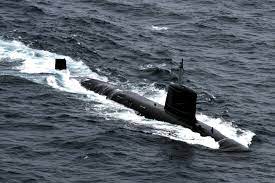
Defence Minister undertook a sea sortie on a Scorpene class submarine ‘INS Khanderi’ at Karwar.
- During the trip he witnessed a wide range of operational drills with the submarine demonstrating the advanced sensor suite, combat system and weapon capability which provides it a distinct advantage in the subsurface domain.
Scorpene Class Submarine
- The submarines in the Project-75 Scorpene Class are powered by diesel-electric propulsion systems.
- Scorpene is one of the most sophisticated submarines, capable of undertaking multifarious missions including anti-surface ship warfare, anti-submarine warfare, intelligence gathering, mine laying, and area surveillance.
- The Scorpene class is the Navy’s first modern conventional submarine series in almost two decades since INS Sindhushastra, procured from Russia in July 2000.
Submarine Khanderi:
- Khanderi is a Kalvari class diesel-electric attack submarine.
- It has been named after a deadly sawfish Khanderi which is found in the Indian Ocean.
- Indian Navy had commissioned the first Khanderi submarine on December 6, 1968, and served till its decommissioning in October 1989.
- These submarines other than Khanderi include – Karanj , Vela, Vagir ,Vagsheer and Kavalari have already been launched in water.
Kavalari Class of Submarine:
- Kalvari class is based on Scorpene-class submarines built for the Indian Navy with diesel-electric attack capacity.
- The Defence Ministry of India approved Project-75 in 1997 that allows the Indian Navy to acquire 24 submarines.
Informal Sector Workers In India:
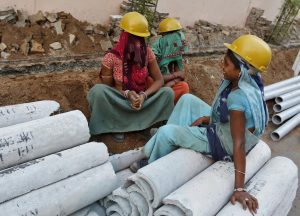
According to the latest data, as many as 27.69 crore informal sector workers are registered on the e-shram portal.
- Over 94% of 27.69 crore informal sector workers registered on the e-Shram portal have a monthly income of Rs 10,000 or below and over 74% of the enrolled workforce belongs to Scheduled Castes (SC), Scheduled Tribes (ST) and Other Backward Classes (OBC).
- The proportion of the General Category workers is 25.56%.
- The data showed that 94.11% of the registered informal workers have a monthly income of Rs 10,000 or below, while 4.36% have a monthly income between Rs 10,001 and Rs 15,000.
- 61.72% of the registered workers on the portal are of the age from 18 years to 40 years, while 22.12% are of the age from 40 years to 50 years.
- The proportion of the registered workers aged above 50 years is 13.23% while 2.93% of workers are aged between 16 and 18 years.
- 52.81% of registered workers are female and 47.19 % are male.
- Top-5 States in Terms of Registration: Uttar Pradesh, Bihar, West Bengal, Madhya Pradesh and Odisha.
- Occupation Wise: Agriculture is at the top with 52.11% of enrolments done by those related to the farm sector followed by domestic and household workers at 9.93% and construction workers at 9.13%.
e-Shram Portal:
- Launched in 2021, e-Shram portal is aimed at building a comprehensive National Database of Unorganized Workers (NDUW) in the country.
- Aim: To register unorganised workers such as construction labourers, migrant workforce, street vendors, and domestic workers, among others.
- The workers will be issued an e-Shram card containing a 12-digit unique number.




